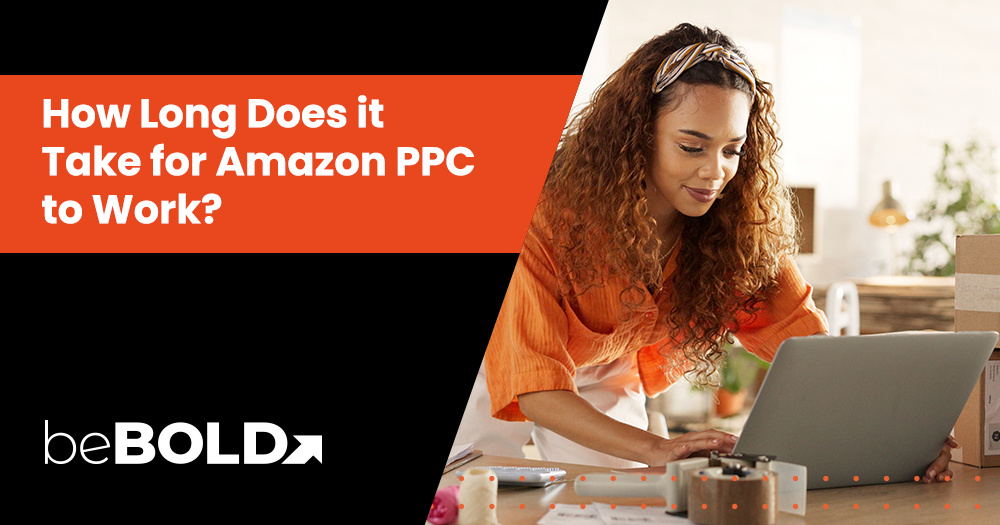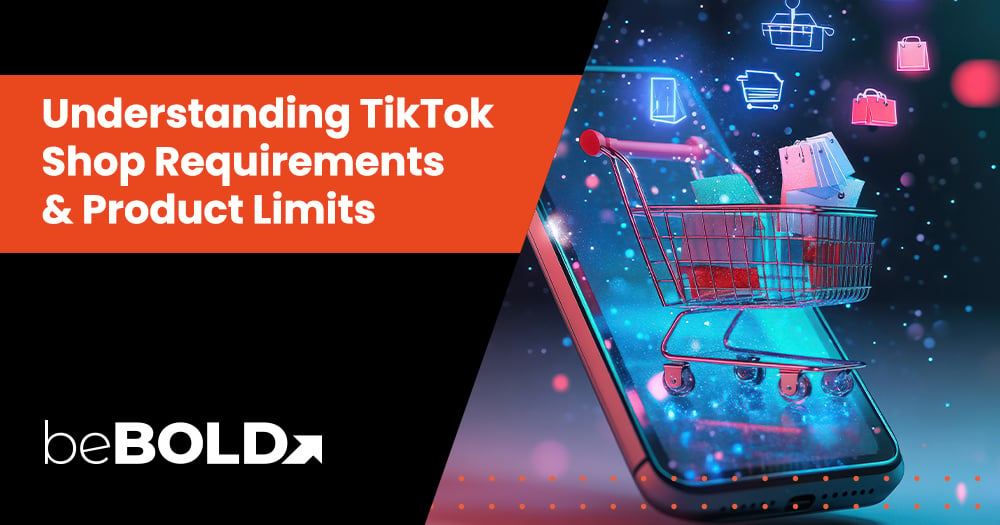Key Highlights
- This guide breaks down what to expect from your Amazon PPC campaigns—from launch day to long-term scaling across multiple ad types.
- Initial results show up in 3–7 days, but real performance trends start to emerge after 2–4 weeks.
- Campaigns typically stabilize in 1–3 months, with long-term success depending on continuous optimization over 6+ months.
- Factors like ad budget, product listing quality, and keyword targeting significantly affect how fast you see results.
- Using automation tools and negative keywords can help speed up performance and reduce wasted ad spend.
- Frequent bid or keyword changes can hurt performance by disrupting Amazon’s learning algorithm.
- Optimized product listings and high-intent Sponsored Product ads are key to driving faster conversions and better ROI
You've launched your advertising campaign on Amazon and are eagerly waiting for results. But do you know that Amazon PPC doesn’t deliver instant success? Okay, how long does it really take? In 3-7 days, you’ll see initial data, but is that enough to make decisions?

Not quite—real trends take 2-4 weeks to develop as Amazon’s algorithm fine-tunes ad placements. By 1-3 months, your campaign stabilizes, offering more precise insights into profitability. However, for sustained growth, continuous optimization over 6+ months is essential. The key is patience—are you ready to refine, scale, and maximize your results?
In this blog, we will delve into the world of Amazon PPC advertising. So sit back and get ready to understand Amazon PPC advertising better!
What is Amazon PPC Advertising?
Amazon PPC (Pay-Per-Click) advertising is a paid marketing strategy where advertisers bid on keywords to display their ads on Amazon's search results and product detail pages. This model helps sellers increase product visibility, drive traffic, and boost sales through targeted campaigns.
When a shopper clicks on an ad, the advertiser pays a fee, making PPC a cost-effective and best way to attract potential buyers. The success of these campaigns depends on keyword selection, bidding strategies, and ad relevance.
Timeline for Seeing Results on Your Amazon PPC Campaign
Launching an Amazon PPC campaign is a process that unfolds in stages. Understanding the expected timeline helps set realistic expectations and ensures strategic adjustments at the right time.
Day 1-3: Campaign Launch & Initial Data Collection
- Ads go live and begin accumulating impressions.
- Expect minimal clicks and conversions as Amazon’s algorithm starts learning.
- CPC may be high as Amazon tests different placements and audiences.
Week 1-2: Algorithm Learning & Early Performance Insights
- Ads start getting more visibility, leading to an increase in clicks.
- Conversion rates may be inconsistent as Amazon optimizes ad placement.
- Identify early trends in keyword performance.
Week 3-4: Refinement & Optimization
- Sufficient data is available to make bid adjustments.
- Pause underperforming keywords and refine match types.
- Ad placements and budgets can be optimized based on initial trends.
- Early signs of ACoS stabilization may start appearing.
Month 2: Performance Improvement & Scaling Opportunities
- Optimized campaigns begin showing steady conversions.
- Bid and budget adjustments refine profitability.
- Identify high-performing search terms and shift more budget toward them.
- ACoS and ROAS become more predictable.
Month 3 & Beyond: Scaling & Long-Term Growth
- Campaigns reach stability, with refined targeting and optimized bids.
- Scaling strategies (such as expanding keyword lists or increasing budgets on top-performing ads) come into play.
- Sustainable ACoS and profitability targets become achievable.
- Continuous monitoring and adjustments keep the campaign competitive.
By following this timeline, you can better anticipate your PPC campaign’s trajectory and make data-driven decisions at each stage.
Factors Affecting the Time Taken for Amazon PPC to Work

Amazon's PPC effectiveness relies on various factors influencing its timeline. In the following sections, we will have a look into these components that can gauge the time needed for your Amazon PPC efforts to yield the best results.
1. Campaigns Require an Initial Learning Phase
When launching an Amazon PPC campaign, an initial learning phase is essential as the algorithm collects clicks, conversions, and sales data to optimize ad performance.
Rushing through it can lead to poor PPC results and wasted ad spending, so patience and continuous monitoring are key to optimizing your campaign for growth.
2. Amazon's Algorithm Needs Time to Gather Data
Amazon's algorithm requires time to accumulate data necessary for optimizing your Amazon PPC campaign effectively. This initial phase plays a crucial role in understanding your target audience, refining ad performance, and enhancing overall campaign effectiveness.
Allowing the algorithm time to gather data sets the foundation for accurate targeting, improved ad strategy, and better visibility.
3. The Attribution Window
Amazon’s 7-14 day attribution window affects how sales are tracked from your PPC ads. If a shopper clicks your ad but purchases days later, Amazon still attributes the sale to that ad.
This delay can make early performance seem lower than it actually is. Evaluating results after the full attribution period ensures more accurate optimization.
4. Ad Budget & Bidding Strategy
A well-planned ad budget and bidding strategy directly impact how quickly you see significant results. Higher budgets and competitive bids accelerate visibility, driving faster data collection and optimization. Lower bids and limited budgets, however, can slow impressions and delay conversions.
Additionally, as customers’ behavior changes frequently, it’s best to make bid adjustment during peak shopping events like Prime Day, Black Friday, and Cyber Monday.
5. Competition & Market Trends
In Amazon PPC, competition and market trends directly impact your campaign’s success. High-demand niches often require higher ad spend and a longer optimization period to see consistent results.
Analyzing competitor strategies and market shifts helps refine your approach, ensuring your ads remain visible and relevant. Staying proactive allows you to adapt, optimize, and maintain a competitive edge.
6. Ad Quality & Targeting
Optimized ad creatives and precise targeting are key to Amazon PPC success. High-quality ad copy tailored to your audience increases engagement, while relevant keywords and exclusions improve performance.
Well-optimized creatives not only boost visibility but also drive higher conversion rates. Continuously refining your ads ensures they remain relevant, competitive, and effective.
7. Product Listing Quality
High-quality product listings are essential for Amazon PPC success. Well-optimized pages with relevant keywords, compelling copy, and engaging images not only attract potential customers but also drive higher conversion rates.
Detailed, informative listings build trust and encourage purchases, directly improving ad performance. Investing in listing quality can make a significant difference in campaign success.
8. Click-Through Rate (CTR) & Conversion Rate (CVR) Adjustments
CTR and CVR are critical metrics that directly impact your Amazon PPC ad rank and efficiency. Higher CTR signals relevance to Amazon’s algorithm, improving ad placement, while strong CVR ensures better returns on ad spend.
Continuously refining ad copy, targeting, and bidding based on these insights helps maximize performance, driving more conversions and profitability.
Best Practices for Optimizing Your Amazon PPC Campaign

A structured, phased approach is key to building a high-performing Amazon PPC campaign. By gradually refining strategies based on data, you can maximize efficiency and profitability over time.
Phase 1 (First 30 Days): Data Collection & Early Optimization
The first month is all about gathering data and testing. Here’s what you should do during the phase 1:
- Use broad and phrase-match keywords to identify high-converting search terms.
- Monitor ad impressions, CTR, and conversions while adjusting bids based on performance. A well-structured campaign with accurate targeting helps Amazon’s algorithm optimize placements faster.
- At this stage, product listing optimization is key. Clear titles, compelling descriptions, and relevant keywords improve ad relevance and visibility.
- Focus on collecting enough data to make informed adjustments in the next phase.
Phase 2 (Month 2-3): Refining & Scaling
Now it’s time to cut what’s not working and refine what is. Follow the below points to make the most out of Month 2-3.
- Remove underperforming keywords, refine bidding strategies, and double down on high-converting search terms.
- A/B test different ad creatives and headlines to see what drives better engagement.
- Understand audience behavior—analyze when they shop, what terms they use, and how different ad placements perform.
- Keep adjusting bids and monitoring CTR, CVR, and ACoS to ensure maximum efficiency.
Phase 3 (Month 4+): Long-Term Strategy & Scaling
With a well-optimized campaign, scale up strategically. Here’s how you should make long-term strategy to scale up:
- Increase budgets on profitable campaigns, introduce new keywords, and test Sponsored Brands and Sponsored Display ads for broader reach.
- Consider advanced tactics like dayparting and audience segmentation to improve returns.
- Regular monitoring is still essential. Stay ahead of competition by reviewing search term reports, testing new ad variations, and making data-driven adjustments. The goal is to scale profitably without wasting ad spend.
How to Optimize Amazon PPC for Faster Results?
Speed matters in Amazon PPC, and the right strategies can help you see results sooner. From selecting the best ad types to refining keyword targeting and leveraging automation, these tactics will accelerate performance and improve your ROI.
1. Choosing the Right Ad Types for Quick Performance
If you want fast results, Sponsored Products should be your primary focus since they appear directly in search results where high-intent buyers are looking.
However, note that:
- Sponsored Brands are great for brand awareness but take longer to convert, while Sponsored Display is best for retargeting and keeping your product visible.
- Prioritize Sponsored Products with high-intent keywords and competitive bidding to drive immediate traffic and sales.
2. Implementing Negative Keywords to Improve ACoS
Unfiltered ad traffic wastes budget and lowers efficiency, making negative keywords essential for cost control.
Thus, you must:
- Regularly review your search term reports and block irrelevant queries to eliminate wasted spend and improve targeting.
- By continuously refining your keyword list, you’ll ensure your ads reach the right audience, leading to better conversions and a lower ACoS.
3. Using Bid Automation Tools for Faster Optimizations
Manually adjusting bids is time-consuming, but AI-driven bid automation helps optimize your PPC strategy in real time.
Here’s what you should keep in mind:
- Tools like Amazon’s Dynamic Bidding and third-party automation platforms analyze performance data and adjust bids instantly.
- This ensures high-performing keywords get priority while reducing spend on low-converting ones, speeding up campaign efficiency and results.
Common Mistakes That Slow Down Amazon PPC Performance

As you set up PPC for your Amazon account, you must avoid some errors that can stop you from achieving optimal results. By steering clear of these pitfalls, sellers can enhance their Amazon advertising strategy and elevate their performance in the competitive marketplace. Let's have a look at these mistakes.
1. Overbidding on Low-Performing Keywords
One common mistake Amazon sellers make is overbidding on low-performing keywords, which can drive up Advertising Cost of Sale (ACoS) and lower Return on Ad Spend (ROAS). While competitive bidding improves ad visibility, spending excessively on keywords that fail to convert leads to wasted ad spend and poor profitability.
To optimize your budget:
- Focus on keywords that generate actual sales, not just clicks.
- Regularly analyze performance metrics and adjust bids accordingly to ensure your ad spend is directed toward high-converting opportunities.
2. Ignoring Negative Keywords
Failing to incorporate negative keywords in your PPC campaign can lead to irrelevant traffic and low click-through rates (CTR). Without negative keywords, your ads may appear for unrelated search queries, attracting clicks from shoppers who have no intent to buy—driving up costs without conversions.
Here’s how you can refine the approach:
- By continuously identifying and excluding irrelevant search terms, you ensure your ads reach the right audience, improving CTR and conversion rates while reducing wasted ad spend.
- More relevant ads also enhance your ad rankings, leading to better visibility and overall campaign performance.
3. Frequently Changing Bids and Keywords
While regular monitoring is essential, frequently adjusting bids and keywords can disrupt Amazon’s learning algorithm and hinder campaign performance. Amazon’s system needs time to analyze data and optimize ad placements effectively. Making constant changes prevents the algorithm from stabilizing, leading to inconsistent ad performance and delayed results.
Thus, you must:
- Allow your campaign enough time to gather meaningful data before making adjustments to maximise efficiency.
- Focus on data-driven optimizations rather than reactive changes to ensure steady performance and better long-term results.
4. Failing to Optimize Product Listings Before Running Ads
Your PPC ads act as traffic drivers, but if your product listing isn’t optimized, conversion rates will suffer—no matter how well your ads perform. Many sellers make the mistake of launching campaigns without ensuring their listings are persuasive and compelling.
To maximize conversions:
- Ensure clear and engaging product descriptions, high-quality images, and strong customer reviews.
- An optimized listing not only improves sales but also enhances ad performance, leading to a better return on investment (ROI) and lower advertising costs.
How Can an Amazon PPC Agency Help Optimize Results Faster?
Amazon PPC requires expertise and constant optimization. beBOLD Digital helps you refine your strategy, improve visibility, and drive sales through data-driven campaigns. With expert keyword research, bid management, and performance tracking, we ensure faster, more efficient results while keeping costs in check.
Why Consider Hiring a PPC Management Agency?
A PPC agency takes the guesswork out of campaign management. With expert bid adjustments, automation, and performance monitoring, you get higher ROAS without wasting ad spend. We at beBold Digital ensure your campaigns run efficiently while you focus on scaling your Amazon business.
What to Expect from a Professional PPC Audit?
A PPC audit uncovers what’s draining your ad budget and where to optimize. beBOLD Digital helps you:
- Eliminate wasted spend on low-performing keywords
- Refine bid strategies to maximize ROAS
- Identify scaling opportunities for sustainable growth
How beBold Digital Can Improve Your Amazon PPC Performance?
We don’t guess—we optimize. beBold Digital delivers custom PPC strategies, smart bid automation, and real-time performance tracking to boost sales and lower ad costs.
Book a call with us today and let’s build a winning Amazon PPC strategy!
Frequently Asked Questions
How long does it take for an Amazon campaign to start?
While technically, an Amazon PPC campaign can start anytime after set-up, it takes approximately 24 hours for any initial campaign stats like impressions, clicks, and costs to appear on the Campaign Manager dashboard.
Why are my Amazon Ads not showing up?
Various factors can prevent your Amazon Ads from appearing. These include insufficient bids, depleted daily budgets, low ad relevance, or listing violations. Ensuring all parameters are correctly set and compliant with Amazon's advertising guidelines can help resolve this issue.
How do I know if my PPC is working?
Assessing whether your PPC is working involves monitoring key metrics such as Click-Through Rate (CTR), Conversion Rate (CVR), Return on Ad Spend (ROAS), and Cost Per Click (CPC). An effectively working PPC campaign should yield an increased rate of impressions, clicks, conversions, and, ultimately, sales.
Can I speed up the Amazon PPC learning phase?
Yes, higher budgets and aggressive bid strategies can accelerate the learning phase by generating more data quickly. Increased impressions and clicks help Amazon’s algorithm optimize ad placements faster, leading to quicker performance insights and adjustments.
Does PPC affect Amazon organic rankings?
Indirectly, yes. PPC can boost organic rankings by increasing sales velocity and product visibility. More sales signal to Amazon that your product is relevant, improving its organic placement over time.
Ready to avail robust Amazon PPC Strategy? Contact beBOLD Digital to boost your product visibility now!








Comments